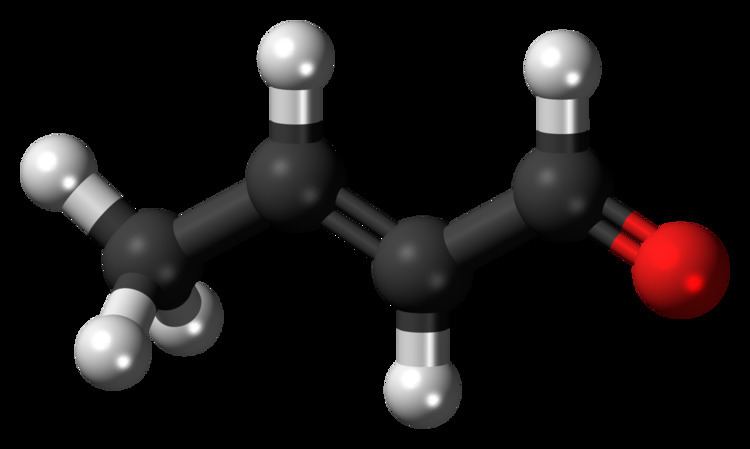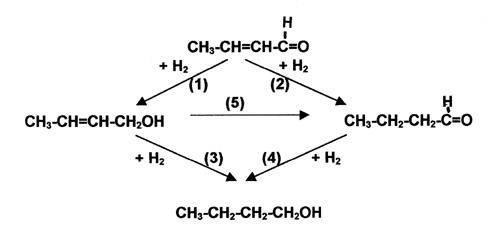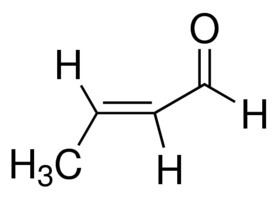Appearance colourless liquid Boiling point 104 °C | Formula C4H6O Density 846 kg/m³ | |
 | ||
Related alkenals | ||
Crotonaldehyde carbonyl compounds class 12 chemistry subject notes lectures cbse iitjee neet
Crotonaldehyde is a chemical compound with the formula CH3CH=CHCHO. The compound is usually sold as a mixture of the E- and Z-isomers, which differ with respect to the relative position of the methyl and formyl groups. The E-isomer is more common (data given in Table is for the E-isomer). This lachrymatory liquid is moderately soluble in water and miscible in organic solvents. As an unsaturated aldehyde, crotonaldehyde is a versatile intermediate in organic synthesis. It occurs in a variety of foodstuffs, e.g. soybean oils.
Contents
- Crotonaldehyde carbonyl compounds class 12 chemistry subject notes lectures cbse iitjee neet
- Production and uses
- Safety
- References

Production and uses
Crotonaldehyde is produced by the aldol condensation of acetaldehyde:
2 CH3CHO → CH3CH=CHCHO + H2O
Its main application is as a precursor to fine chemicals. Sorbic acid, a food preservative, and trimethylhydroquinone, a precursor to the vitamin E, are prepared from crotonaldehyde. Other derivatives include crotonic acid and 3-methoxybutanol.

Crotonaldehyde is a multifunctional molecule that exhibits diverse reactivity. It is an excellent prochiral dienophile. It is a Michael acceptor. Addition of methylmagnesium chloride affords 3-penten-2-ol.
Safety

Crotonaldehyde is an irritant. It is listed as an "extremely hazardous substance" as defined by the U.S. Emergency Planning and Community Right-to-Know Act. It occurs widely in nature. It is used to make preservatives.


